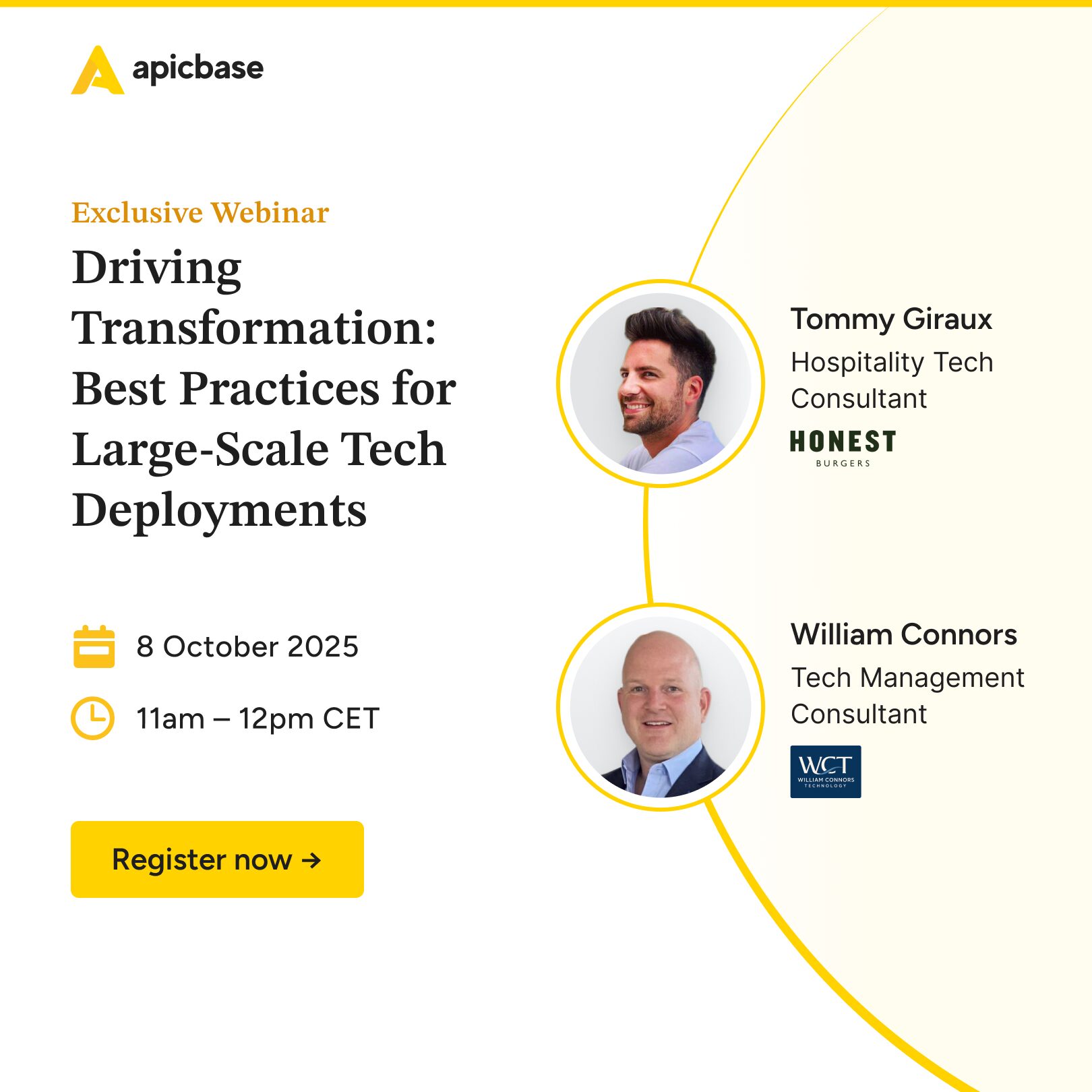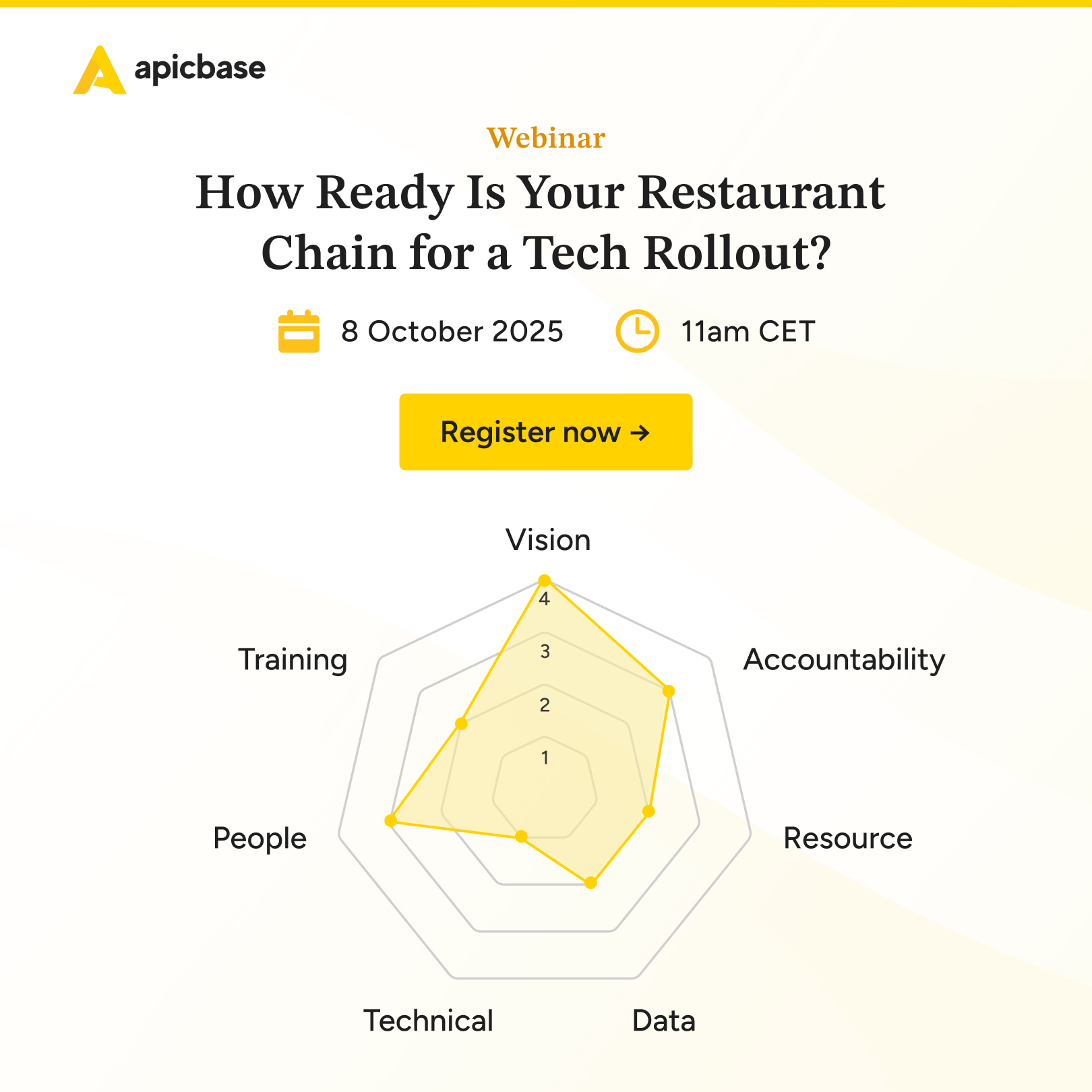The cloud kitchen industry is going hard. Question is: does the exponential rise of ghost kitchens also mean it is a profitable business?
At the moment, it feels like the wild west out there.
That is why I got in touch with the topmost operators to help shed light on the dark kitchen situation.
Can these seasoned cloud kitchen CEO’s and operational managers point out the critical elements of a successful cloud kitchen operation; the bits that have solidified as profitable amongst the wreckage and turmoil of the turf wars that are going on right now?
The answer: yes, they can.
In this post, they will discuss:
- Cost control
- Agility
- Scaling up
- Procedures
- Data usage
- Ultimate Tech Stacks
- Digital marketing
- The future of cloud kitchens
If you need a reminder of just how much the dark kitchen industry has grown, I could point you in the direction of any hospitality news provider out there (it’s the talk of the town).
The report that opened my eyes, however, was the one that had this truly mind-boggling forecast in it:
Ghost kitchens could create a $1 trillion global opportunity by 2030.
Euromonitor International
Let’s look at how successful cloud kitchen operators today are improving operations to secure their bottom line.
(Find out who is who at the bottom the page)
Fierce Cost Control
It is the first topic all operators bring to the table.
Cost control is to a ghost kitchen what a ball is to soccer: essential to the game.
“People think: ‘it’s trendy; cloud kitchens are the future”, Jose Mª Fabregat Olle of Food Haven says. “The truth is, turning a cloud kitchen into a profitable operation is tricky.
It is no secret that the delivery platforms charge a hefty commission. That leaves us with very little wiggle room. For a ghost kitchen, it is necessary to keep food costs, labour cost and rent as low as possible.”
In other words: for a cloud kitchen to be profitable, operations have to be tight like a ‘shirtless Wolverine’. If you are no Marvel connoisseur, it means:
All muscle, no fat.
“We aim for a food cost of 20%”, Amerigo Delli Bove of Casper says.
Which is considerably lower than that of a traditional restaurant.
“We monitor the dish margins religiously in Apicbase. When a recipe drops below target we immediately investigate and look for the cause. Is it the portioning, supplier pricing…? We have to know.”
Rens Bekkers of Bright Kitchen puts it like this: “We offer an awesome menu, but food cost is the main focus. We do this by developing a super lean operational model with flexible overhead costs. That way costs line up with the sales. In other words: on a slow day, costs are low as well.”
“Cost control is key”, agrees Jean Valfort, CEO of Panorama Group in France, “but it is not just food cost. It’s also staff costs and others. You need to streamline operations and bring your biggest cost centres to really low levels.”
Agility Is Not an Option. It’s a Must
Fast, faster, fastest. In the ghost kitchen industry speed is everything.
“Testing new ideas is quick and ridiculously easy. Put a dish online and you immediately know what it is worth”, Thomas Gendry of Kumo Kitchens says.
“One time, I wanted to try a new kind of pancake. Within the first week, it had doubled the sales of the previous best-seller. It was crazy. Other times, a new idea doesn’t work as hoped. No harm done, it is just one click to take it offline again.”

Amerigo agrees, “but”, he adds, “you need the right team and infrastructure to make it happen. We’ve expanded our offer from burgers to salads, soups and a full range of Asian dishes, in the span of just a few months. All dishes are prepared by the same team and in the same kitchen. Agility has to be a built-in feature of the business model. You have to go where the demand is and be able to turn on a dime.”
Even during a pandemic? “Of course, the demand for delivery has skyrocketed. We recently launched three pop up stores in major cities in The Netherlands and Belgium, without losing control of F&B or Ops.”
Crush Food Costs in Your Cloud Kitchen
Get daily data-driven insights, scale your virtual kitchen operation & leave your competition in the dust.
Be Ready to Scale
“It is really simple”, Jose says. “Our goal is to grow as fast as possible.”
Rens: “When it comes to growth, Bright Kitchen has much more in common with Silicon Valley than with the restaurant industry.”
Cloud kitchen concepts want to scale up and they want to do it fast.
The goal is to dominate their share of the market. The bigger they are, the harder it becomes for new competitors to claim a stake.
Thomas of Kumo Kitchens says: “with volume comes profitability.”
All operators are looking to launch on average 20 new brands before the end of the year, and two or three new production units.
What most of these young entrepreneurs have in common is that they don’t have a background in the restaurant industry.
“It’s a benefit”, believes Jose. “Sure, we make mistakes that are obvious to seasoned professionals. On the other hand, we have no biases. We look at this industry with fresh eyes and that’s what you want in disruptive times.”
Jean Valfort offers a different perspective. Apart from being a digital native, he also has a strong background in the traditional restaurant business.
“To us the food business isn’t a ‘winner takes all’ market. In the digital startup industry you can focus on scale and not profitability, yes, because once you are the biggest, you’ll earn money from that monopoly position.
But this is not the case in our field. What I learned from operating restaurants for so many years is that in the food industry, there is no such thing as a monopoly. In other words, you must make money from day one. And make money on each client you serve.”

No matter what vantage point you take, one thing is for sure, when the volume goes up, the costs go down.
Jose adds: “My executive chef is always looking for synergies between brands. For example: we have a sushi, poke and chirashi brand. The main ingredients are the same.
That means we can buy bigger volumes at better prices. And it’s the same chef that does the cooking for all brands. Launching a new brand doesn’t involve extra costs. A new virtual brand is basically a free upsell.”
“Once you have the operations set, the ghost kitchen module is easy to scale”, Thomas says.
Which brings us to the next key element:
Recommended resource: Cloud Kitchen Management Software: 17 Systems That Improve Efficiency And Profitability
Bulletproof Procedures
Rickety processes run fingernails down the blackboard of a dark kitchen operator’s very soul.
There is of course the need for consistency. A customer expects the same great experience every time they order. From preparation to packaging, the kitchen teams have to follow the procedures to a tee to make that happen, regardless of where they are located.
The other major goal is efficiency.
“Efficiency is at the core of everything we do. I wouldn’t think about opening a new production unit if the performance wasn’t there”, Rens says.
“One question is on our minds and one question only: how can we optimise operations? If we are profitable in one location, then we can also make it work in other locations.”
It doesn’t work the other way around.
Robust BoH systems ensure that a ghost kitchen’s success is repeatable anywhere, anytime. So the right protocols have to be there and everybody on the team needs to know how to put them into practice.
“Efficient protocols are the weapon of choice for cost management”, Jose says. “Profitability hinges on the staff’s discipline in following procedures for recording food waste, doing stock counts, registering F&B deliveries and so on.”

When procedures are validated and implemented in all production units, it becomes easier to track performance, capture the data behind the operations and pull valuable information from them.
“Specifically for the so-called ‘uncontrolled stock’”, Rens continues.
“Inventory control is paramount for food cost management. The more uncontrolled stock there is, the more worried an operator should be. It signals that somewhere in the operation there is wasting, overportiong or something else going wrong and it is putting a strain on the dish margins.”
The better teams adhere to the protocol of recording inventory movements, the smaller the amount of uncontrolled stock becomes and the easier it is to discover when and where things go wrong.
Data is the Currency
In many ways, purebred cloud kitchens are as much tech companies as they are food companies. Data fuels the business model.
“Absolutely”, Thomas says, “I built the company on data that I gathered from the delivery platforms and then adapted the restaurant to what people were asking for. The interaction a customer has with our brand or menu is truly insightful. We monitor everything: the items they look at, the meals they buy, reviews, ratings, comments on social media.”
Thanks to the user data, the success rate for new menus and products goes up exponentially.
“It is essential to understand what the customer wants”, Jose puts in. “It begins with identifying the most popular dishes, and then we drill down to what ingredients they have in common. That information we use to develop new recipes and even complete new brands.”
Amerigo adds: “Our long term goal is to leverage the data to identify a handful of main ingredients and develop a whole range of popular recipes around them that only have minor differences in production. It brings down food and labour costs and is easy to scale up.”
Rens sums it up nicely. “You can sit in meeting rooms for days discussing whether or not a hamburger tastes good. When you have the data, there is no need for meetings. Things become very obvious, very quickly.”

User data aren’t the only nuggets of gold a ghost operation is after.
“Data management is the alpha and omega of Casper”, Amerigo exclaims. “We benchmark the suppliers and do a full breakdown of all costs before we put a dish online.
“The data points us in the right direction, and it keeps us on track.”
The user and back of house data supports operators in their quest to improve performance and shave off percentages of the costs.
Rens Bekkers uses Apicbase to help monitor the back of house: “The software provides insight into the incoming & outgoing food flows and everything related to that. It is an incredibly complicated matter that the software takes care of. The reports help us decide which menus to kill, to optimise protocols and to better deal with food cost.
Let’s put it this way: the data allows us to leave gut feelings at the door and build our business on reliable facts.”
Turn Your Dark Kitchen into a Data-Driven Production Unit
Tech for a Successful Cloud Kitchen Operation
Businesses that have so much riding on accurate data insights need capable systems to capture the information and make sense of it.
The big question here is: how should cloud kitchen operators think strategically about technology? There is so much going on. How to find out what will work for you?
Fred LeFranc of Results Thru Strategy answers the question on the excellent podcast Food on Demand:
“You need to look at the system holistically. If you make buying decisions on a one by one basis and don’t ask yourself: ‘can these systems integrate?’ You’re going to hit a wall at some point down the line.
Major disruptors in this area are the cloud-based systems. POS is an aggregator for sales and customer data. You base your business decisions on that, sure, but you also base them on the back of house-system, on the accounting software, etc. All these technologies have to work together seamlessly.”
If you don’t ask yourself: ‘can these systems integrate?’ you’re going to hit a wall.
Fred LeFranc
Carl Jacobs, CEO of Apicbase, confirms: you run the risk of creating data silos.
“You get stacks of information that are interesting in itself but unrelated to each other. A point solution will do one thing very well, like calculate your recipe costs, and then that’s that. Spreadsheets can do that for you too.
What you need is a system that can connect the dots. Food cost control, for example, is more than a recipe calculation. It is about streamlining procurement with the inventories of your units, the technical sheets and production. That is a tall order when your technologies don’t talk to each other.”
Digital Marketing is the Only Marketing
Be really good at it.
Kitchen United has digital marketing in its list of attributes their most successful members share.
A virtual kitchen doesn’t have a storefront as a regular restaurant does. Still, the brand has to find a way to put its menu in front of the customer.
Specifically at a moment when that customer is hungry and looking to buy a meal.
In the world of online food orders, a delicious hamburger can come from anywhere. People open the delivery app and choose what they want. A virtual brand has to make sure customers want their burger and not just any burger.
“Marketing is super important to us”, Amerigo says. “We have extra people working in that department. They have to figure out how to reach our customers.”

Instagram is the medium of choice for virtual kitchens. Good food photography is vital. People make meal choices based on what they see.
A bold statement from Fred LeFranc in that regard is: “All restaurant companies have to become media companies”.
Thomas makes maximum use of the marketing the delivery platforms offer. “They provide visibility. It is what you want.” The 3rd party delivery apps organise promotions and offer loyalty programs. “You can join anytime. In my experience, these pay off. They generate sales.”
When it comes to the delivery platforms, however, the feelings are mixed. Customer data is vital for digital marketing. This info, or at least most of it, doesn’t leave the platforms. Which might become an issue in the future, if it isn’t one already.
What Does the Future Hold for the Cloud Kitchen Industry?
Well, nobody knows.
The dark kitchen industry is in turmoil. We’ll see different business models solidify in the near future. The unprofitable ones, however, won’t have any trouble finding the exit.
To avoid that second option, innovation is key, all operators agree.
Apart from the key features listed above, two things are likely to propel the cloud kitchen industry forward:
1. Cloud Kitchen Owned Sales Channels
Jose Mª Fabregat Olle: “The platforms aren’t a free market. They work like a search engine and your position in the search results isn’t guaranteed. It means you can have a ton of orders one week, and only half the next. This makes it hard to develop a steady growth.”
Most operators expect a hybrid formula to emerge. The delivery platforms will always generate (a large) part of the orders. Cloud kitchen operators, on the other hand, will also develop their own customer base with user data they own. It offers a more stable foundation to grow the business upon.
2. AI-Driven Demand Forecasts
Rens Bekkers: “Efficient forecasting will be disruptive.” Matching demand with procurement and production is the most difficult part of running a ghost kitchen. When predictions are off, labour and food costs go up.” It means the already slim margins evaporate and profitability finds itself in a tight spot. “
“Artificial Intelligence and Business Intelligence have the potential to revolutionize the foodservice industry”

Yes, I Want to Run a Profitable Cloud Kitchen
Give that button below a tap and schedule a 30-min call with our cloud kitchen cost control experts today.
Who is who

Jose Mª Fabregat Olle
CEO & Founder of Food Haven, Spain
Food haven has a production unit in Barcelona, Spain, with 5 food concepts. It will be operating 20 food concepts by the end of the year and open two more production units in the city.

Amerigo Delli Bove
Chief Operating Officer of Casper, Belgium
Casper is a dark kitchen concept with locations in Gent, Antwerp, Brussels and Leuven. Some outlets offer take-out. Casper provides a range of virtual brands but also supports a strong corporate identity.

Thomas Gendry
Co-founder of Kumo Kitchens, Belgium
Kumo KItchens offers plug-and-play commercial kitchens that are set up for delivery. Operators can move in and start selling online right away. Everything is ready to go.

Rens Bekkers
Founder of Bright Kitchen, the Netherlands
Bright kitchen is Amsterdam’s first delivery-only restaurant and has two locations in the city. The kitchen is made up of a growing portfolio of six plant-based restaurants, many of which ranking in The Netherlands top ten most ordered vegetarian meals.

Jean Valfort
CEO & Founder of Panorama Group, France
Panorama Group owns ten restaurants and concepts in Paris, Nice, Courbevoie, Boulogne, Bordeaux, four of which are dark kitchens. The group is set to open new concepts soon. The goal is to offer great food in great spaces.

Fred LeFranc
CEO & Founder of Results Thru Strategy, USA
He is a recognized leader in the hospitality industry with over 40 years of experience. He has held leadership roles as CEO, COO, and President of numerous hospitality and technology brands.

Carl Jacobs
CEO & Co-Founder of Apicbase
Apicbase is an easy to use food management platform for cloud kitchens, multi-unit restaurants, hotel chains and large scale catering. It supports operators in automating and optimizing the BoH-processes to keep costs down, quality up and staff happy.



